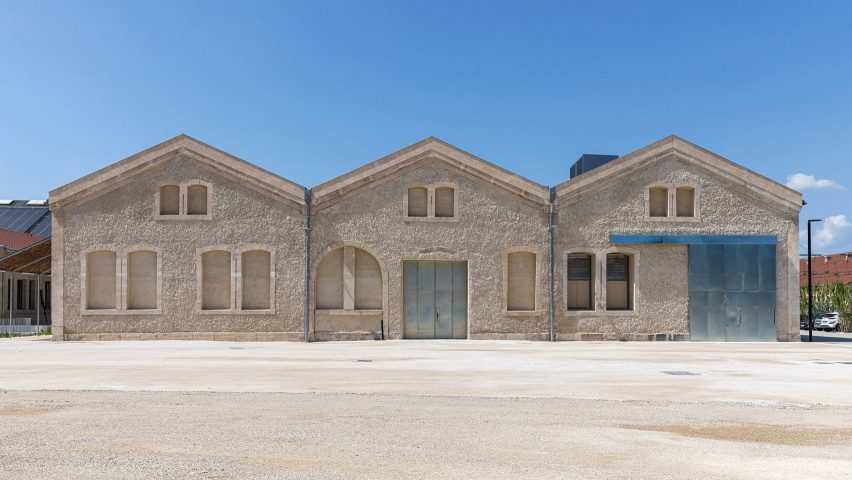
Salt and sunflowers used to create Atelier Luma's experimental workspace
Sunflowers, salt and algae are among the biomaterials used to complete Le Magasin Électrique, the workspace of circular-design lab Atelier Luma that it self-designed with studios Assemble and BC Architects & Studies.
Based at Luma Arles arts centre in France, Le Magasin Électrique occupies a former industrial building and contains laboratories that now serve as Atelier Luma's primary workplace.
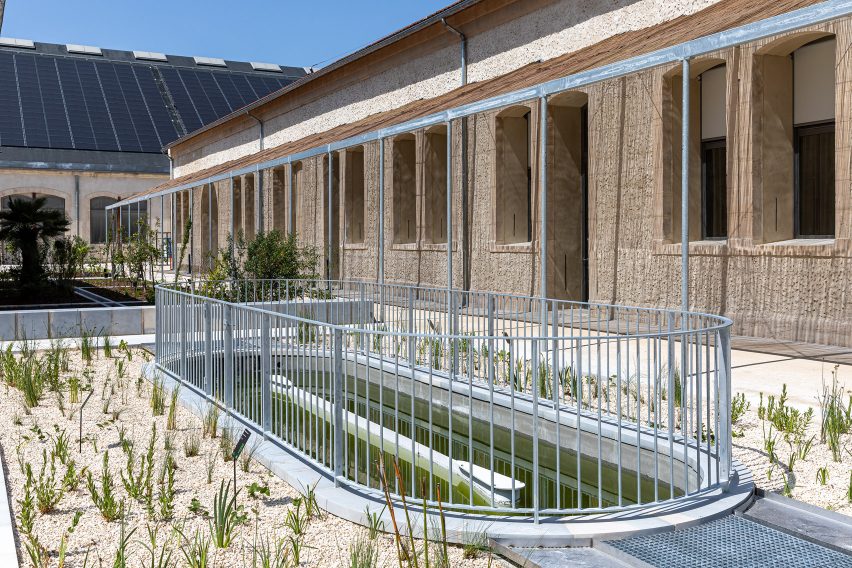
Atelier Luma, Assemble and BC Architects & Studies' design is defined by an unusual palette of materials made from locally sourced bio-waste, various by-products and other under-valued materials.
It aims to embody Atelier Luma's "bioregional approach" to design, which is a term it uses to describe its transformation of resources from the surrounding region into innovative, low-carbon building products. For Atelier Luma, this "bioregion" covers a 70-kilometre radius and includes the Camargue wetlands, the Alpilles mountain range and the Crau flat plains.
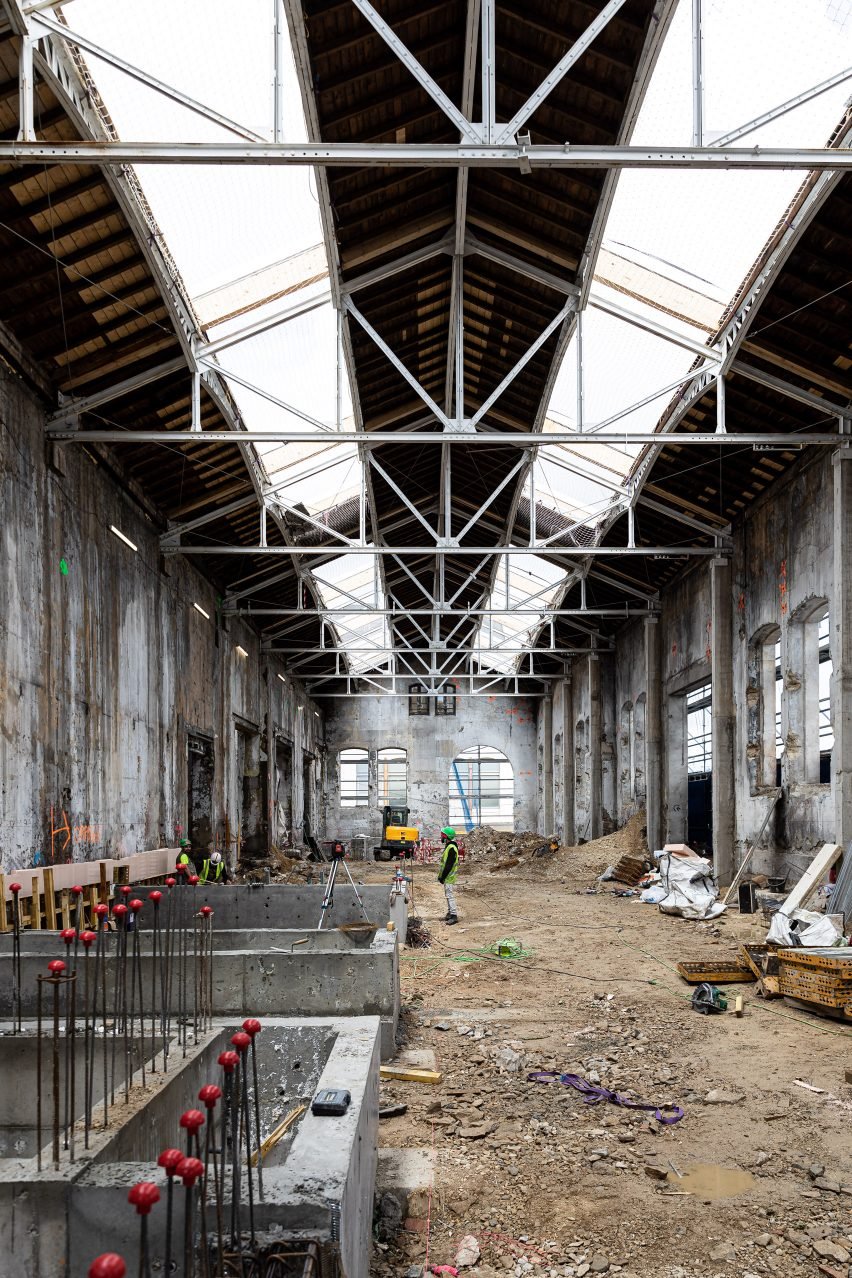
"The overarching goal was to create a building as a prototype that would allow for this low-impact bioregional approach to design to be tested at scale," Atelier Luma told Dezeen.
"Through investigation and mapping, we uncover the many layers – historical, cultural, environmental, social, and economic – that are making up this bioregion and weave them together into potential projects," it continued.
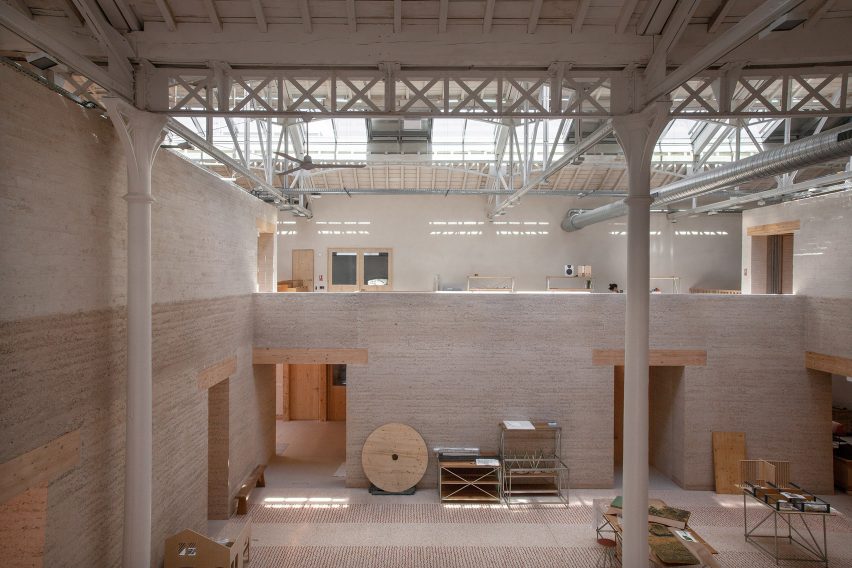
"Rather than seeing things from a linear centralised perspective, we believe in complexifying the existing ecosystems of bioregions in order for us to move toward more sustainable and eventually regenerative practices," added Atelier Luma.
"Any good chef will have detailed knowledge of how and in which conditions their ingredients are produced, it should be no different for architects and designers."
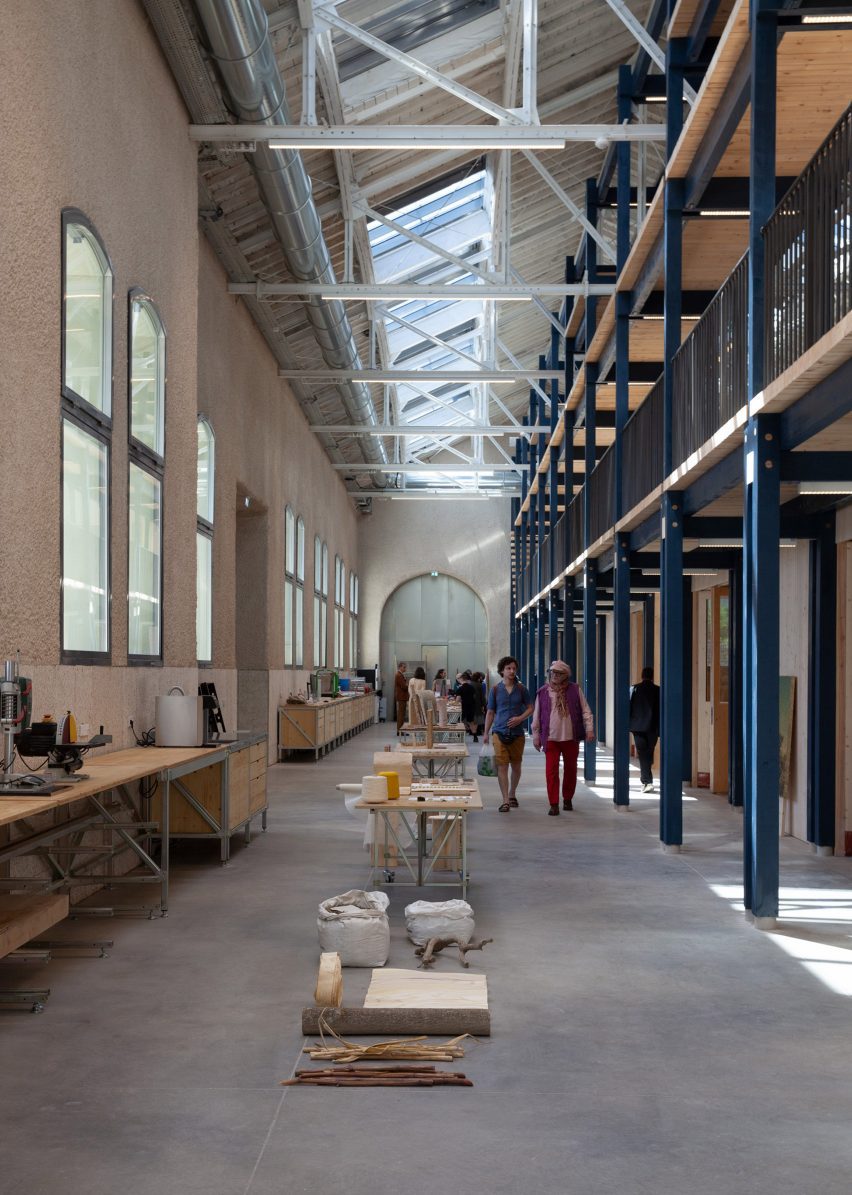
Le Magasin Électrique forms part of the Parc des Ateliers, a former industrial site built in the mid-19th century that is now home to the Luma Arles. Until 1984, it was used for the construction and maintenance of trains belonging to the railway company SNCF.
In 2013, a renovation of the site began, leading to the recent opening of the Luma Arles Tower designed by Canadian-American architect Frank Gehry, which also incorporates biomaterials by Atelier Luma.
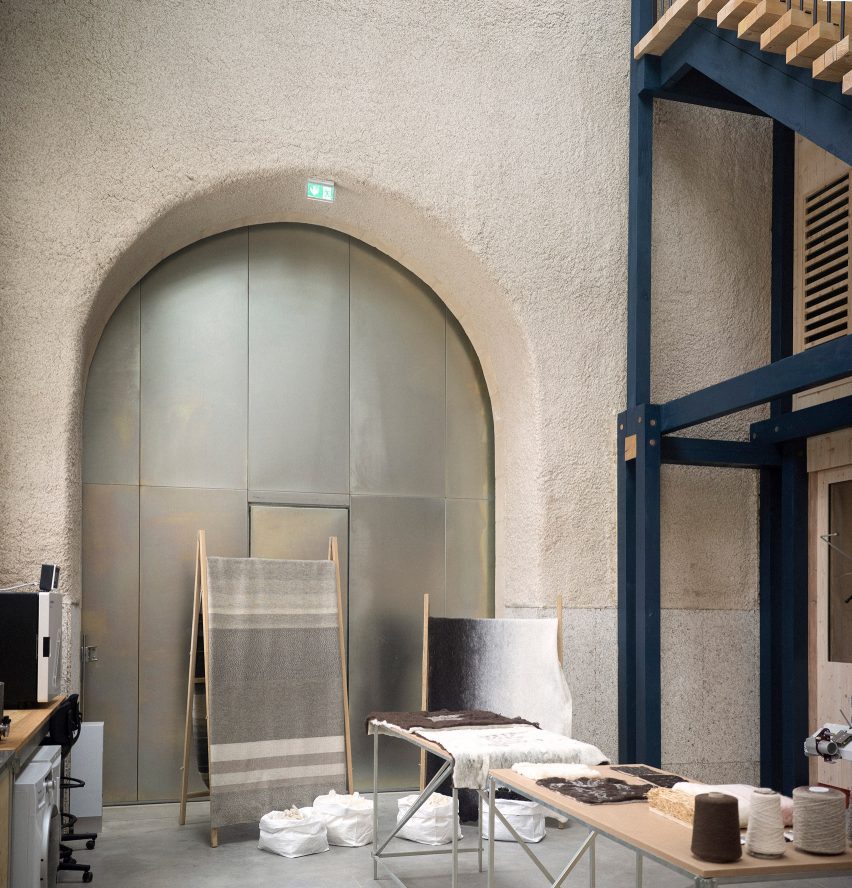
According to Atelier Luma, there are nearly 20 of its unique building materials used throughout the project, each made from resources found across the region.
Each one was developed to suit a specific need – ranging from securing the building's structure to meeting its acoustics and technical requirements.
"If you walk through the buildings and spaces and you look around, you see so many stories," said BC Architects & Studies architect Laurens Bekemans.
"The building would become a testing ground, a space to experiment," continued Assemble co-founder Joe Halligan. "The building is also a prototype or a kind of constant construction.”
Among the unusual materials are bioplastic plug sockets and wall and acoustic panels made from agricultural waste including sunflower fibres.
Elsewhere, door handles are made from salt crystals, bathroom tiles are made from algae and rammed earth walls and external earth plaster are made with demolition waste.
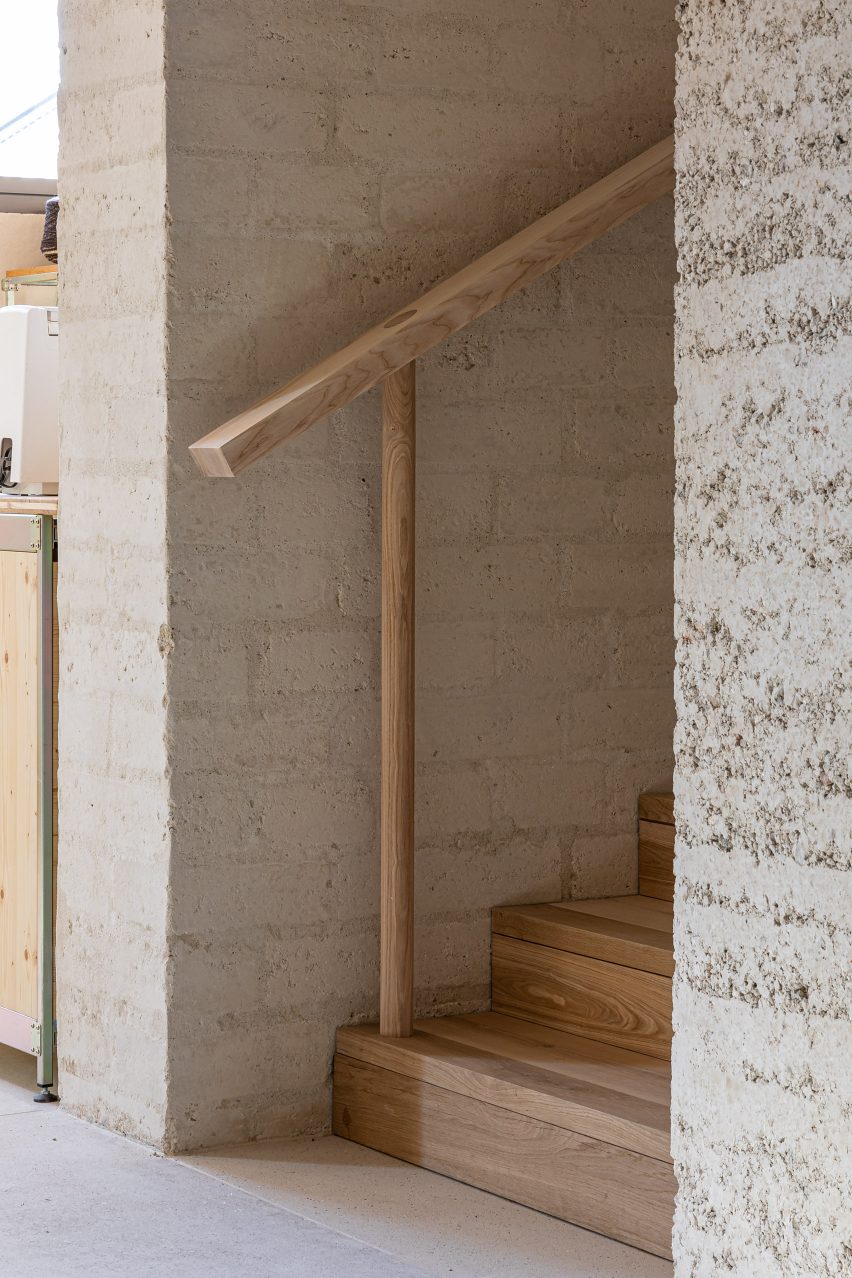
Algae has also been used to filter and recycle wastewater from the building. This is then repurposed in the irrigation of the studio's garden that is used for research and for cooling.
According to Atelier Luma, the only raw materials that were used at Le Magasin Électrique were classed as waste products, byproducts or under-valued materials.
Meanwhile, the criteria for using bio-based materials was that "they could not be a resource that was destined for food consumption".
While making use of Atelier Luma's unusual materials, the design of the building also had to be functional and flexible enough to accommodate the studio's "ever-expanding activities".
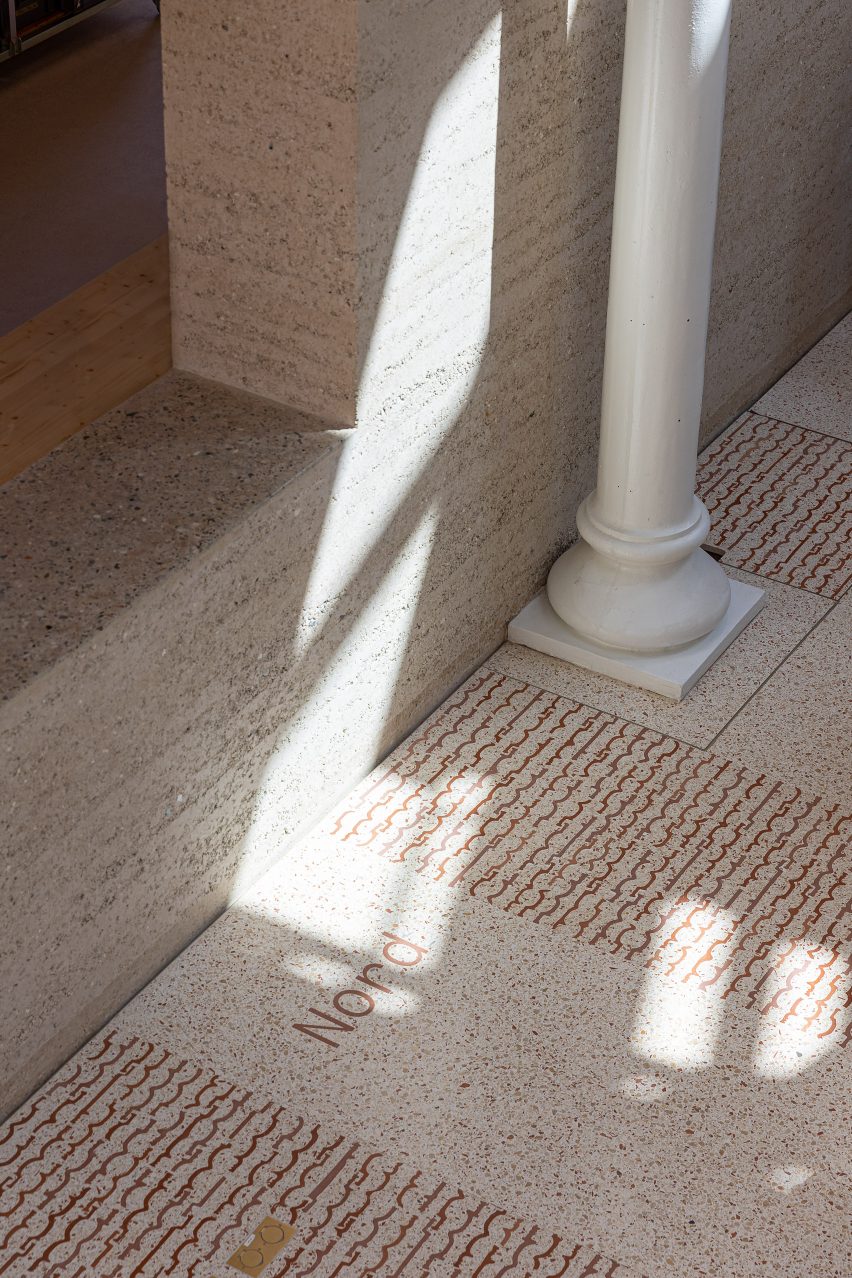
The brief outlined the specific spaces required, including highly technical labs and workshops, but also areas that can accommodate non-specific and "unknown activities" in the future.
Inside, Le Magasin Électrique is divided into three zones. Many aspects of the original building have been retained within these, giving rise to three distinct areas.
"The building was constructed in stages, this led to the creation of three distinct volumes within the building," said Atelier Luma.
"These subdivisions have been retained to allow for three distinct spaces with differing qualities, both in terms of program and materiality."
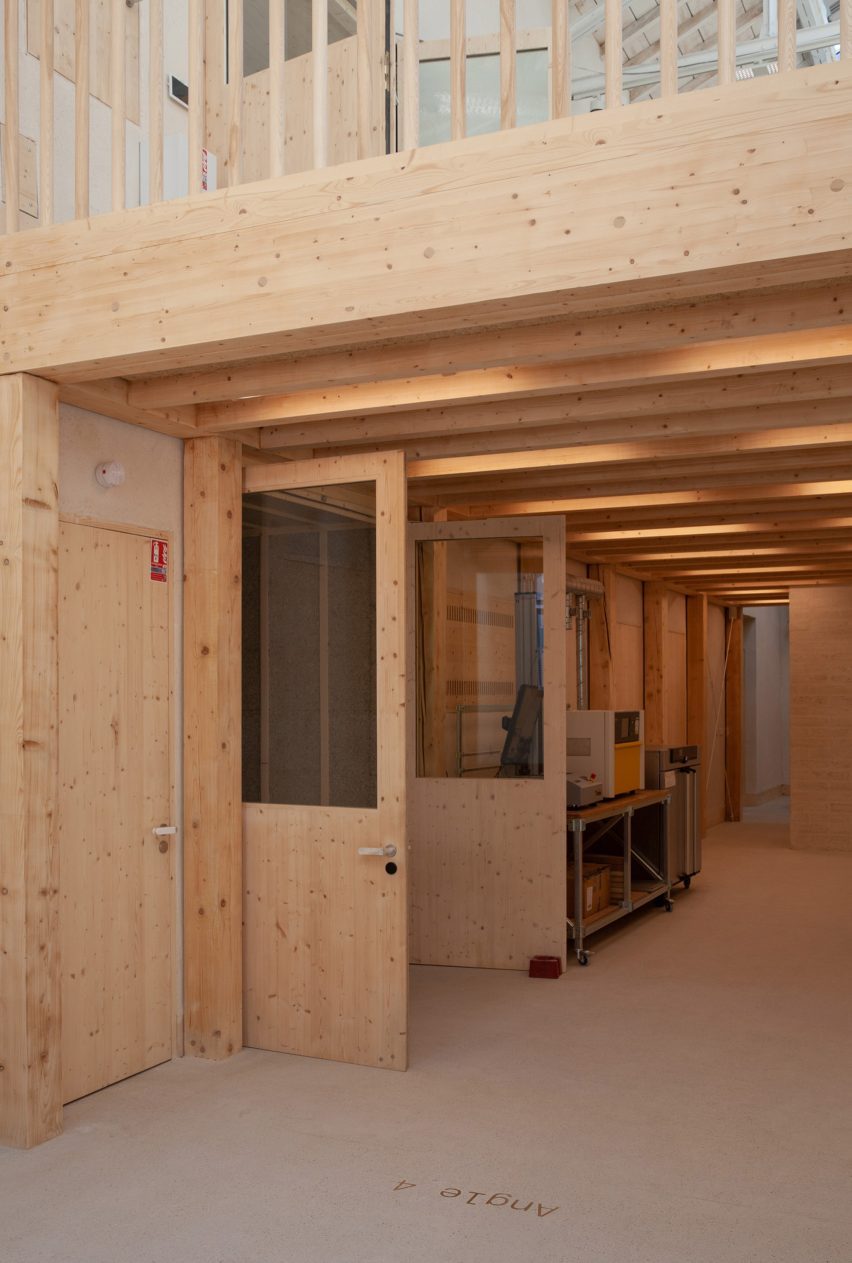
One of the zones is formed from a wooden structure dyed with indigo, which combines a walkway, workshops, toilets and a mezzanine desk space.
"Timber was chosen for its speed of construction, robustness and ability to accept change," said Assemble's Maria Lisogorskaya. "The use of timber allows screws to be fixed throughout the space, wherever might be useful, helping to create an unprecious and productive atmosphere appropriate for a workshop."
Original elements that have been retained include external windows and door openings. On the south facade, the windows have been filled to reduce glare but remain distinguishable.
The original roof tiles have been preserved, but insulated below to improve energy performance. Any tiles that were previously damaged have been crushed and reused in the new earth render on the facade, as well as in terrazzo flooring.
Other alterations to the existing shell of Le Magasin Électrique include the introduction of long skylights to improve natural lighting and ventilation.
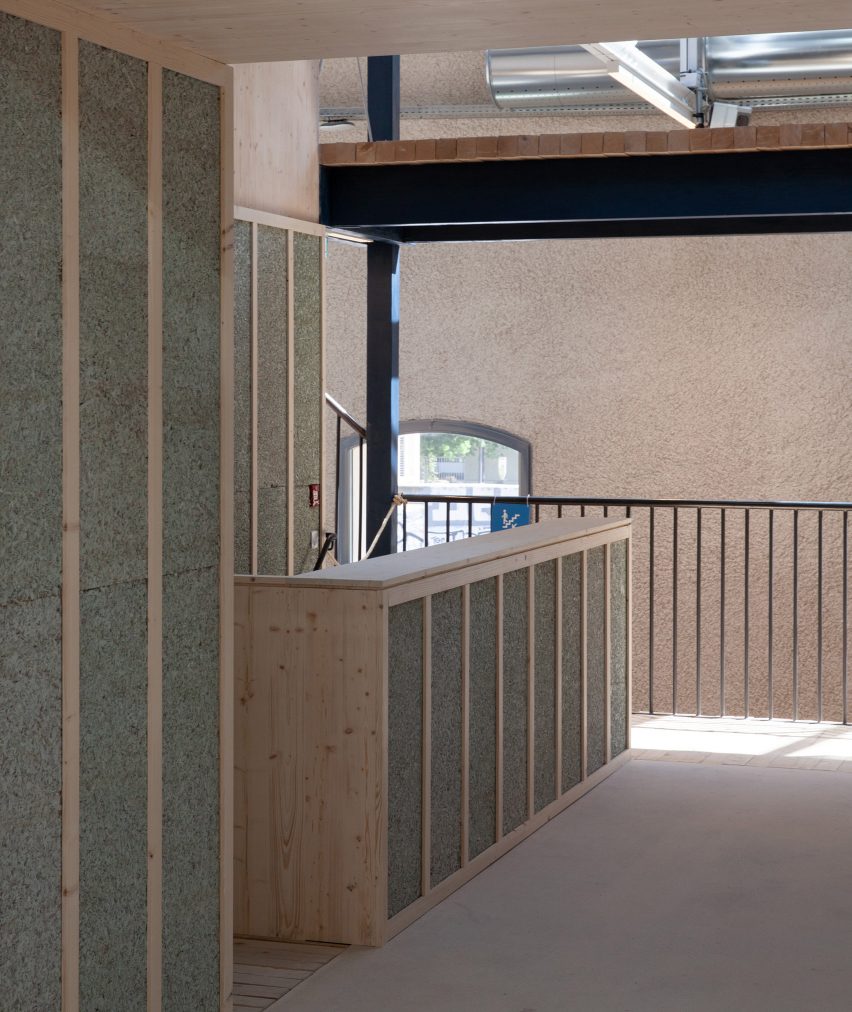
Reflecting on the project, Atelier Luma said all of the unusual products it has used are replicable at scale, though this is not its aim.
"The materials applied in this building can be applied in other buildings throughout the region and even beyond," Atelier Luma explained.
"However it is not our wish to ship these materials all over the world," it continued. "We believe that what is most replicable is not necessarily the physical outcomes of this bioregional design approach, but rather the methodology of the approach itself."
Assemble's James Binning agreed but highlighted that this will also require new regulation frameworks.
"Building regulations have been designed around the properties of industrialized, standardized products and how these materials perform, but if we are going to transition to a culture of using materials that are organic and which vary from place to place, we will also need to design different frameworks of regulation that allow for that," Binning explained.
Circular-design lab Atelier Luma was established in 2016 by Luma Arles – an arts centre in Arles. It is currently led under the direction of Jan Boelen.
In 2021, its material designer Henna Burney took part in our Dezeen 15 festival, during which she told Dezeen "salt is a material of the future" and exhibited cladding she has made from the crystalline substance as part of the studio.
The photography is by Adrian Deweerdt unless stated otherwise.